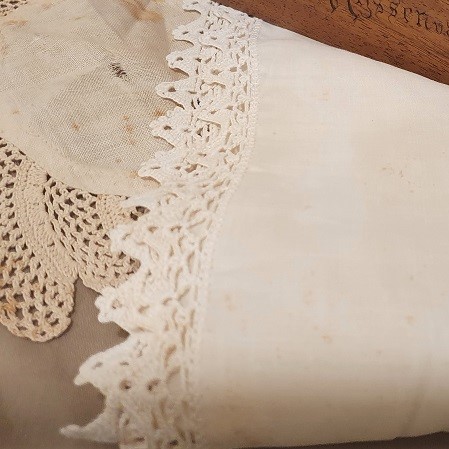I wrote this article after I helped my mother move house. In the process of packing and sorting, we rediscovered many items from our past that stirred a lot of memories. As I reflected on these stories, I thought about my love of textiles and the path my live took that brought me to meet Dr Reem, work with her to establish The
Zay
Zay: (Arabic: costume, Pl. azyaā’), a set of clothes in a style typical of a particular country or historical period. Initiative’s blog, and be ‘the voice’ of the blog and the newsletters over the past four years. As this is my last post as Content Manager, I decided to share a small piece of my family’s story here to illustrate how we are all connected through dress and textiles.
Unpacking old stories
The interesting, and poignant, thing about helping my mother move is the memories and stories from my childhood that we hauled from drawers, cupboards, and boxes. But even more interesting and poignant are the discoveries from her past and the generations that came before us. We rediscovered our ancestry as we packed and sorted.
My great-grandmother’s story is one I’ve known about for a while. I have a few items that used to belong to her, and during our packing sessions, we came upon a few more. Here is her story.
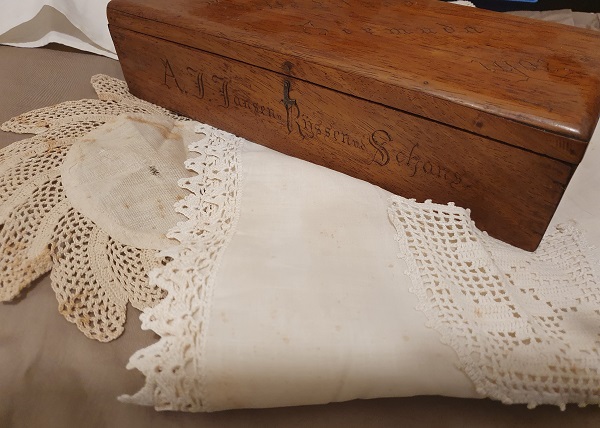
A new story on a new continent
She was born in Middelstum, the Netherlands in 1876. She was engaged to my great-grandfather when he was posted to work as a teacher in the then Boer Republics (now South Africa) in 1899. They were married
‘with the glove’ or by proxy as she remained in Europe and only followed him to the new world as a married woman. She was trained in ‘
fijne handwerk’ (needlework/embroidery).
She arrived in her new country just before the start of the
Second Boer War. All eligible men joined the fight against the British, including my great-grandfather. Many horrible things happened during this war and those who survived carried physical and psychological scars for the rest of their lives. My great-grandfather was taken prisoner of war and sent to a
POW camp in Bermuda, while my great-grandmother was sent to a British
concentration camp in Howick with her young baby. The baby later died in the camp.
Rewriting her story
After the loss of her baby, her parents were able to arrange her release from the camp and my great-grandmother were able to return to The Netherlands by ship where she stayed for the remainder of the war.
We still have the letters that she wrote to her husband in Bermuda, but none of those he wrote to her. We assume these letters were lost at a later stage as it is obvious from some of her letters that she is replying to things he had written to her.
At the end of the war, the POWs were returned to the Boer Republic. As we can gather from her letters, her husband suggested that she stay in Europe and make a new life for herself as he had nothing to offer her. She refused and insisted on returning, telling him that whatever the future has in store, they will face it together. She returned by ship, and over time they rebuilt their lives, first living in a tent before they were able to build a modest home. They had three more children of which my grandmother, whose name I carry, was one.
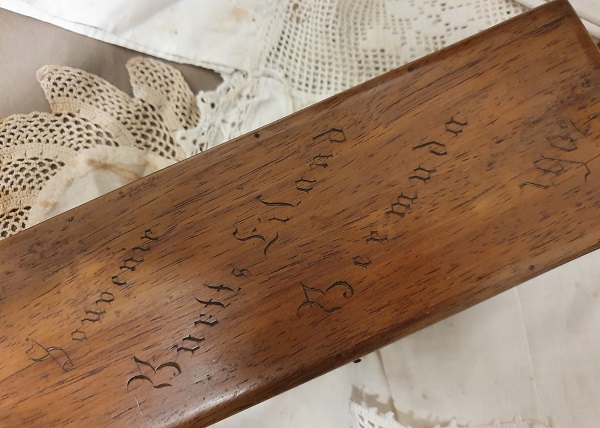
Many stories told in threads
This is first and foremost a love story, and secondly a story about the horrors of war. But it is also a story of textiles and threads. As my great-grandmother was an embroiderer, her life was marked by things that she made by hand. As her namesake, my mother inherited many of the things she made, and I am now proud and humbled to become the custodian of these artefacts.
We have embroidery samplers that she used for teaching, aprons and pillowcases that she stitched for her home, and a framed needlepoint still-life that she worked on while on the ship returning from Europe after the war. We also have a few finely knitted lace doilies she made. I keep it in a wooden box carved by my great-grandfather while he was in the POW camp and inscribed with his wife’s name.
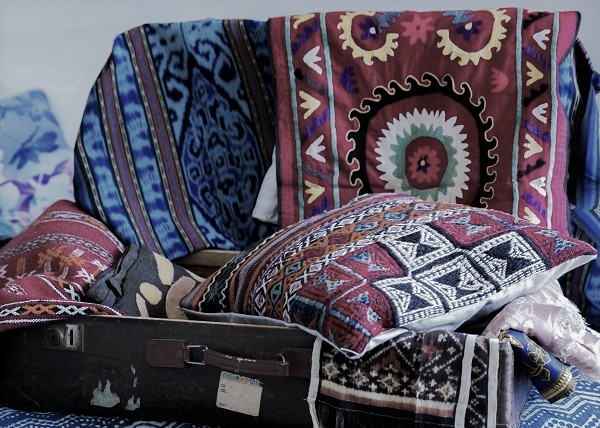
The story continues
A few small things tell a story that happened more than a hundred years ago. A few small things make me understand where my affinity for needlework comes from and where my urge to move across continents comes from.
But it also tells the story of how threads connect. How needlework creates a home and a heritage. I can now see how the family thread that started in Europe was woven into their new African fabric. I am now continuing this African thread taking it through the Middle East and on to Australia. Who knows where my children and their children’s thread will take them?
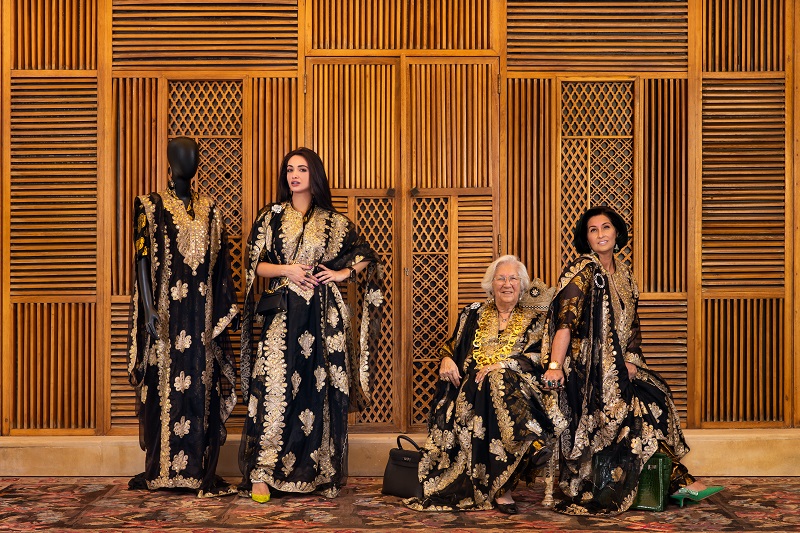
We all have stories
In
this article, Dr Reem shared her story and that of her family and how a dress from their shared heritage binds three generations together. This is a universal story. It applies to all of us. Items of clothing, jewellery, household textiles, and other items made by hand tell stories. It absorbs memories. It gives context. And it represents all the intangible layers that give our life meaning. Love, loss, liberty, struggle, and joy are all woven into what we wear and what we use to embellish ourselves and our homes.
That is what The
Zay
Zay: (Arabic: costume, Pl. azyaā’), a set of clothes in a style typical of a particular country or historical period. Initiative collects - Stories stitched in threads and wrapped in fabric. May this humble story inspire you to search for your family’s story through dress, and to look at old clothes not as something to be discarded, but as something that tells a story. If you want to share your dress heritage story with us, contact us at
info@thezay.org.
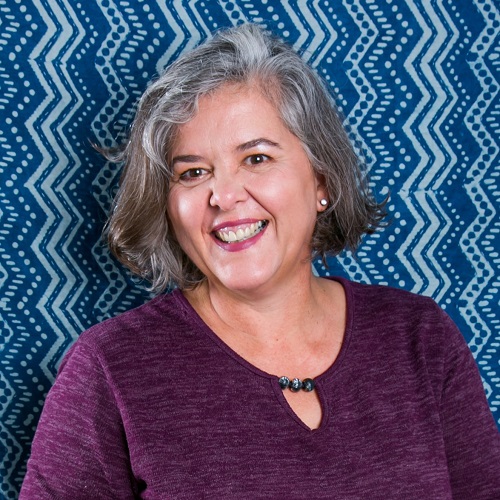
About the author
Ansie van der Walt is a South African/Australian textile writer. She writes about cultural textiles and textiles in fine art and has contributed to a range of print and online publications including Inspirations Magazine, Garland Magazine, Piecework, HandEYE Magazine, and others. She also writes for her own platform
The Fabric Thread. She was the Content Manager for The
Zay
Zay: (Arabic: costume, Pl. azyaā’), a set of clothes in a style typical of a particular country or historical period. Initiative from its inception in 2019 until the end of 2022.




